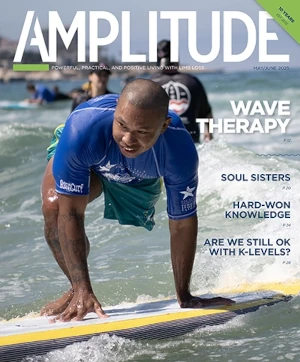by Ali Hussaini

It’s a slow march forward.
Advancements in technology, orthopedic surgery, 3D printing, and user-initiated support groups are collectively stabilizing the ground and helping people with limb difference provide more vocal, more informed feedback in the prosthetics field. Prosthesis users are increasingly comfortable in communicating their desires (and criticisms) of prosthetic care, and manufacturers and practitioners are responding with innovative solutions.
Yet it’s hard for those solutions to gain traction in a niche healthcare market. Prosthetic devices require a highly individualized level of care, which makes them prohibitively expensive for many. Having a quality product that provides a better healthcare outcome becomes irrelevant if you price out the patient.
Too often, high costs force a choice between forgoing the needed rehabilitation services or feeling pressured to open up a very personal story on a crowd-funding platform to raise funds. This second route can be more problematic than it seems, because it doesn’t address the ongoing costs that come with using a prosthetic limb. Parts need to be repaired, liners need to be replaced, and invoices need to be paid. None of the above is covered by a one-time crowdfunding campaign.
This gap has created opportunities for new businesses to cater to those who can’t afford the healthcare they need. They often take the form of 3D printing ventures and/or online stores that promise to sell directly to the end user. I’m often concerned with any healthcare service that features the phrase “removing the middleman” prominently in their advertising. The direct-to-consumer approach recasts healthcare as some type of Amazon-online distributor.
BUT these companies are successfully marketing to people who can’t afford high-priced clinical care. Naturally, some healthcare professionals are concerned about whether this type of business model can provide the quality of healthcare that’s necessary to make the device truly beneficial. But if it’s a difference between being completely priced out and losing the motivation to improve your quality of life, versus a discounted model that puts you in charge and offers some degree of help, the latter is better than the former.
That’s where these types of businesses find their foothold. They provide increased access for people who previously couldn’t dream of affording a prosthetic device. These companies often give you access to online support forums that create a sense of community and help people feel engaged with others experiencing similar circumstances.
But when high costs are preventing you from moving forward and you’re tempted by a less expensive option, take stock of what you’re giving up.
One thing you’re losing is personalized care. An intimate device like a prosthesis needs to be customized to reflect your physiology and personal needs. This individualized care is usually managed by prosthetists, physical therapists, occupational therapists, and other clinical care professionals. You’re not getting any of that when you pay less for a direct-to-consumer prosthetic device. Makers of these products are asking you to take on the heavy lifting that a clinical care team would typically provide. They’re keeping costs low by outsourcing clinical care to you, the consumer.
This self-managed risk is often framed as a benefit—promoting consumer choice and individual agency—but it can also be used as a cover for the healthcare components that are sacrificed to keep the cost low. Be aware of this.
Removing practitioners from the equation can lead to confusion, frustration, and rejection. Clinicians provide expertise that comes from years of understanding not just the prosthesis but also the context in which you’ll be using that device. They can help you choose the right prosthesis for your functional needs and advise you about how to adapt to your kitchen, your bathroom, and other environments. The care team can also share best practices for residual limb care, exercise, mobility, and overall health.
What happens when your affordable device needs a minor adjustment or repair? Not everyone is an engineer, has access to a workshop, or is an expert MIG welder. You could acquire some tools, but the sharpest knives in the world won’t turn you into Jacques Pépin overnight. Proper vocational training might help you develop the skills you need for DIY care, but that training isn’t included with any prosthesis that has an attractive price.
Generally, devices have a tendency to work when they’re used exactly the way the manufacturer directs them to be used. Move outside that narrow operating zone, and your “affordable care”’ may not be as robust as advertised. It’s why your split hook can take a beating, and why your kid’s 3D printed hand can be in three corners of your living room at the same time.
In short: Cheaper options don’t necessarily mean cheaper solutions. They might just shift some of the costs from one form to another.
There are some promising ways forward, however. Partnerships between innovative manufacturers and practitioners—such as the one between Open Bionics and Hanger Clinic—are a great example of a step in the right direction. The Hero Arm is less expensive and comparable in function to many multi-articulating myoelectric prostheses, and Hanger Clinic is backing it. The company worked with upper-limb specialists to develop the device, and they’ve been reaping the rewards. It took time and patience, but they worked through the system instead of around it—and they can now deliver a viable solution.
If this model can be extended to include body-powered and passive devices, it would enable more people who feel priced out to afford the devices they need, without having to give up the care they deserve. That increased independence is what we’re all after.
It’s a slow march forward—but we seem to be getting somewhere.
Ali Hussaini is a Research Fellow with the University of Portsmouth. His work explores emerging medical interventions, functional assessment tools, barriers to new technologies and healthcare outcome measures for improved quality of life.



